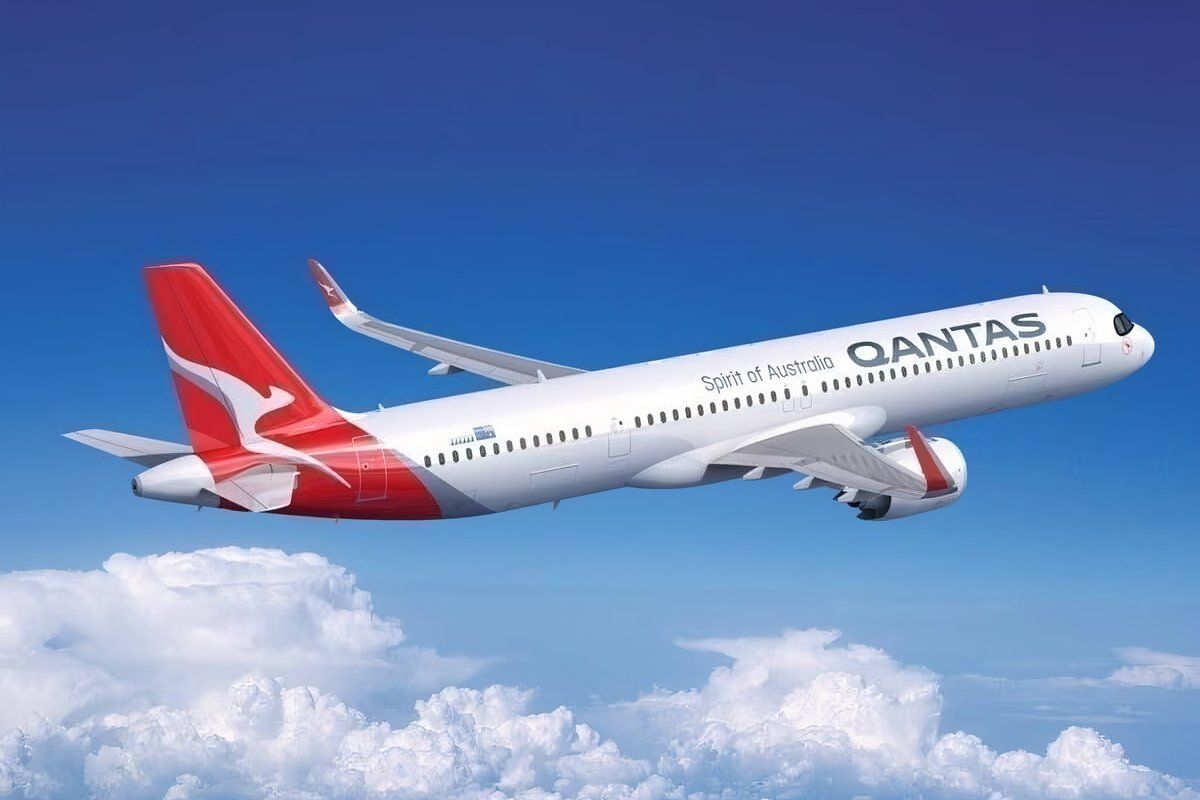I recall being in a press conference at the 2019 Paris Air Show when Guillaume Faury and Christian Scherer triumphantly announced that Australia's flag carrier, Qantas, was among the first to place orders for the Airbus A321XLR. The A321XLR was unveiled at the show and immediately aroused much interest and excitement, with a flood of orders announced during the week. The countdown is on for Qantas On Thursday, Qantas announced its pilots had started simulator training as the airline prepares for the first A321XLR to arrive in April next year.
Qantas has 28 A321XLRs on order that will progressively replace the existing Boeing 737 fleet over the next decade, allowing the full-service airline to open new nonstop routes that are not viable with the current narrowbodies. Nearly half of all Qantas passengers travel on the Boeing 737 fleet, which indicates how important the Airbus A321XLR is to the future of the airline and its people. Qantas Group CEO Vanessa Hudson said the arrival of the A321XLR represented significant opportunities for employees and customers, and the new aircraft means more jobs, training and promotion opportunities for Qantas employees.

"The A321XLR is a fantastic aircraft to be part of our next generation fleet, and its range and versatility will give us the opportunity to explore more nonstop routes and operate them cost effectively. The QantasLink A220s and the Jetstar A320neo Family already received as part of our Group renewal program are providing major improvements in running cost, network flexibility, passenger comfort and emissions." Qantas does not operate the Airbus A320, although its low-cost carrier Jetstar is currently operating 15 A321LRs and around 50 A320/A321ceos, so within the Group, there is already a trained pilot cohort and considerable operating knowledge of A320neo Family aircraft.
Qantas is aiming to train more than 240 pilots on the A321XLR over the next three years. Today, the two Qantas Airbus A220s made their commercial debut, and it was a roaring success with the passengers, crew, and the airline. The training will be on a new CAE 7000XR Series A320 simulator based in the new Sydney Flight Training Centre.
The simulator is fitted with the latest technology and will be one of the few in the world fitted with a dual head-up display, making the 60 hours of simulator training even more realistic for the Qantas pilots. More flight simulators and other training equipment will be installed, and it will be fully operational before the end of this year. The A321XLR pilots will return for four recurrency training sessions annually, and in addition, around 2,000 cabin crew will be progressively trained on the new aircraft type as they enter the Qantas fleet.
The new cabin unveiled The Qantas A321XLR is five meters (16.5 feet) longer than the Boeing 737s it is replacing, and it will be configured in a two-class layout of 197 seats, with 20 in business and 177 in economy. That's 13% more seats with no reduction in the space between seats and a 66% increase in premium seats, although Qantas said the first three A321XLRs will arrive configured with 180 economy seats.
The business class seats will have a 37-inch pitch and 5-inch recline in a 2-2 layout. Each leather-covered seat will have a six-way adjustable headrest, calf rest and footrest, an in-arm tray table with a built-in tablet holder, and an extendable cocktail table. Devices will be kept charged with a wireless charging pad and dual USB A and C charging ports.
The A321XLRs will have the largest overhead bins of any single-aisle aircraft, which allow for 60% more bags than the 737. The cabin is enhanced with a sense of spaciousness from the higher ceilings, larger windows and wider cabin than the 737s in use today. Passengers will also enjoy fast, free WiFi to stay connected across multiple devices and stream content to their own devices.
The economy seats will have the same 30-inch pitch as the current 737s, but at 17.6 inches, they will be wider. They will have a leather six-way adjustable headrest, extra comfort seat cushioning, dual USB A and C charging ports, an adjustable meal table and a drop-down tablet holder for personal devices accessing the fast, free WiFi and inflight entertainment.
The A321XLR can fly approximately 3,000 kilometers (1,865 miles) further than the 737, opening up a wider range of nonstop domestic and short-haul international routes, such as from Australia to Southeast Asia and the Pacific Islands. It is quieter, burns less fuel and generates fewer emissions per seat than previous-generation aircraft on similar routes. It is powered by Pratt & Whitney GTF PW1100G-JM engines and is the longest-range variant of the Airbus A320 family.
.



















